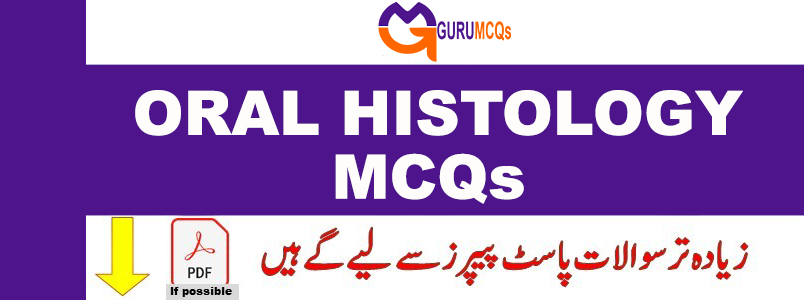
Histology, derived from the Greek words “histo,” meaning tissue, and “logy,” meaning science, is the scientific discipline dedicated to the study of tissues. By delving into oral histology and embryology, individuals can establish a robust understanding of oral biology. The subject encompasses the examination of cellular and tissue development and structure, including the various stages of tooth development and maturation. Areas of focus include the constituents of tissues such as cells, intercellular substances, tissue fluids, and components of human teeth like enamel, dentin, and dental pulp. Gurumcqs.com offers Oral Histology Multiple-Choice Questions (MCQs) along with answers, carefully curated from reputable reference books on oral histology. These MCQs are valuable not only for academic purposes but also for interview preparation, entrance exams, competitive assessments, and certifications, catering to individuals at all levels of expertise, whether experienced professionals, newcomers, or students. Additionally, those interested can explore Oral Pathology MCQs for further study.
161. Inorganic content of cementum is______________?
A. 45 to 50%
B. 50 to 55%
C. 55 to 60%
D. 60 to 65%
162. The region in which cementum formation is most rapid is_____________?
A. Middle
B. Coronal
C. Apical
D. Interradicular
163. Which of the following statement is true______________?
A. Cementum is thinnest at CEJ (20-50μm)
B. Cementum is thickest towards the apex (150-200μm)
C. The apical foramen is surrounded by cementum
D. All of the above
164. Reestablishing the former outline of the root surface is_____________?
A. Anatomic repair
B. Functional repair
C. Physiological repair
D. Hyperplasia
165. Intermediate cementum is___________?
A. Between enamel and cementum
B. Found at dentinocemental junction
C. Apical third
D. Coronal third
166. Which of the following is correct?
A. Cementum is more resistant to resorption than bone
B. Bone is more resistant to resorption than cementum
C. Both are equally resorbable
D. None of the above
167. Hardness of fully mineralized cementum is_____________?
A. Less than dentin
B. More than dentin
C. Equal dentin
D. None of the above
168. Which of the following is true of cellular cementum ?
A. Forms during root formation
B. Forms after the eruption of the tooth
C. Seen at the coronal portion of the tooth
D. Formation is a slow process
169. The cementuoenamel junction is approximately at the level at which the root canal becomes_____________?
A. Twisted
B. Curved
C. Pulp chamber
D. Lateral canal
170. Intermediate cementum is____________?
A. Highly defined cellular zone near cemento – dentinal junction (CDJ)
B. Highly defined fibrillar zone near CDJ
C. Poorly defined zone near cemento-dentinal junction
D. Both a and B

Pingback: Dental Materials MCQs for Competitive Exam Preparation - GURU MCQS